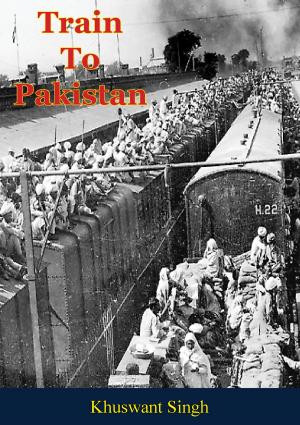Vietnam Studies - Mounted Combat In Vietnam [Illustrated Edition]
Nonfiction, History, Military, Vietnam War, Asian, United States| Author: | General Donn A. Starry | ISBN: | 9781782893660 |
| Publisher: | Normanby Press | Publication: | August 15, 2014 |
| Imprint: | Normanby Press | Language: | English |
| Author: | General Donn A. Starry |
| ISBN: | 9781782893660 |
| Publisher: | Normanby Press |
| Publication: | August 15, 2014 |
| Imprint: | Normanby Press |
| Language: | English |
[Includes 1 chart, 17 maps, 6 diagrams and 38 illustrations]
“The generally unsuccessful experience of French armored forces in Southeast Asia from the end of World War II to 1954 convinced American military men that armored units could not be employed in Vietnam.
“It was not until 1967, however, when a study titled Mechanized and Armor Combat Operations, Vietnam...was sent to the Chief of Staff and Secretary of the Army, that the potential of armored forces was fully described to the Army’s top leaders. Despite the study’s findings that armored cavalry was probably the most cost-effective force on the Vietnam battlefield-there was little that could be done to alter significantly either the structure of forces already sent to Vietnam or those earmarked for deployment...The armored force of the Army of the Republic of Vietnam, meanwhile had been successful enough in fighting the elusive Viet Cong that U.S. armored units had been deployed in limited numbers, usually as part of their parent divisions.
“From early March 1965 until the cease-fire in Jan. 1973, U.S. armored units participated in virtually every large-scale offensive operation and worked closely with South Vietnamese Army and other free world forces. After eight years of fighting over land on which tanks were once thought to be incapable of moving, in weather that was supposed to prohibit armored operations, and dealing with an elusive enemy against whom armored units were thought to be at a considerable disadvantage, armored forces emerged as powerful, flexible, and essential battle forces. In large measure they contributed to the success of the free world forces, not only in close combat, but in pacification and security operations as well. When redeployment began in early 1969, armored units were not included in the first forces scheduled for redeployment, and indeed planners moved armored units down the scale time and again, holding off their redeployment until the very end.”
[Includes 1 chart, 17 maps, 6 diagrams and 38 illustrations]
“The generally unsuccessful experience of French armored forces in Southeast Asia from the end of World War II to 1954 convinced American military men that armored units could not be employed in Vietnam.
“It was not until 1967, however, when a study titled Mechanized and Armor Combat Operations, Vietnam...was sent to the Chief of Staff and Secretary of the Army, that the potential of armored forces was fully described to the Army’s top leaders. Despite the study’s findings that armored cavalry was probably the most cost-effective force on the Vietnam battlefield-there was little that could be done to alter significantly either the structure of forces already sent to Vietnam or those earmarked for deployment...The armored force of the Army of the Republic of Vietnam, meanwhile had been successful enough in fighting the elusive Viet Cong that U.S. armored units had been deployed in limited numbers, usually as part of their parent divisions.
“From early March 1965 until the cease-fire in Jan. 1973, U.S. armored units participated in virtually every large-scale offensive operation and worked closely with South Vietnamese Army and other free world forces. After eight years of fighting over land on which tanks were once thought to be incapable of moving, in weather that was supposed to prohibit armored operations, and dealing with an elusive enemy against whom armored units were thought to be at a considerable disadvantage, armored forces emerged as powerful, flexible, and essential battle forces. In large measure they contributed to the success of the free world forces, not only in close combat, but in pacification and security operations as well. When redeployment began in early 1969, armored units were not included in the first forces scheduled for redeployment, and indeed planners moved armored units down the scale time and again, holding off their redeployment until the very end.”
![Cover of the book Vietnam Studies - Mounted Combat In Vietnam [Illustrated Edition] by General Donn A. Starry, Normanby Press](https://www.kuoky.com/images/2014/august/500x500/9781782893660-ok4D_500x.jpg)
![Cover of the book Recollections Of A Lucknow Veteran 1845-1876 [Illustrated Edition] by General Donn A. Starry](https://www.kuoky.com/images/2014/august/300x300/9781782895329-mqYG_300x.jpg)





![Cover of the book Gradual Failure: The Air War Over North Vietnam 1965-1966 [Illustrated Edition] by General Donn A. Starry](https://www.kuoky.com/images/2015/november/300x300/9781786253989-JiYA_300x.jpg)




![Cover of the book The History of the French Revolution Vol IV [Illustrated Edition] by General Donn A. Starry](https://www.kuoky.com/images/2016/november/300x300/9781787202832-qnUs_300x.jpg)


